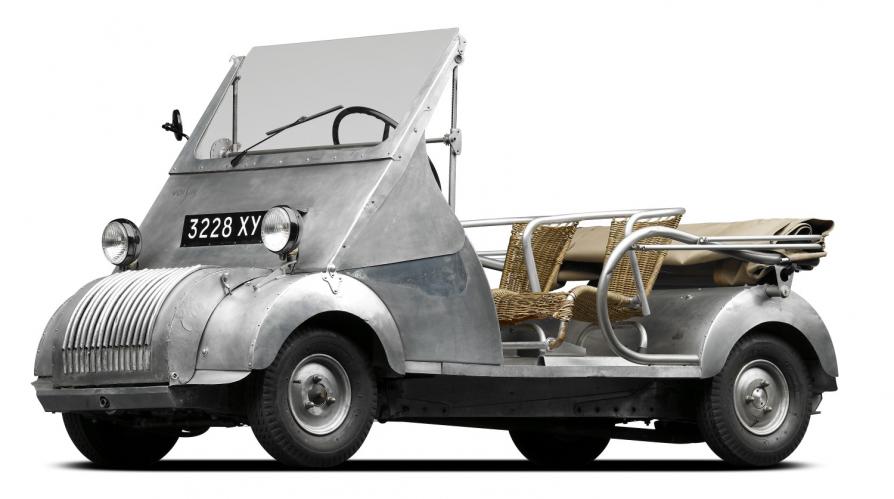1953 Type C31 Biscuter

The descriptions of the Classic Cars in the Directory were partly generated or supplemented with the help of artificial intelligence (AI). The content may occasionally not always be entirely accurate or factually correct despite careful checking.
The Voisin Type C31 Biscuter 1953 is a microcar that was manufactured in France. It stood out for its quirky and unique design, which was the result of Gabriel Voisin's engineering prowess. It was a lightweight, two-seater car that featured a simple but robust construction, with an elongated, egg-shaped body that came in a variety of colors.
The Biscuter was powered by a single-cylinder, 197cc, two-stroke engine that generated 9 horsepower at 5000 rpm. The engine was located at the back of the car and was coupled to a three-speed manual transmission that was operated by a column-mounted shifter. This drivetrain configuration gave the Biscuter a top speed of around 50 km/h (31 mph) and a range of about 200 km (124 miles) on a full tank of gas.
The frame of the Biscuter was a steel space frame, which was made to be lightweight and durable at the same time. The suspension system consisted of semi-elliptical leaf springs at the front and rear, which provided a relatively smooth ride despite the car's small size. The braking system, meanwhile, used hydraulic drums at the front and mechanical drums at the rear.
The Biscuter featured a number of innovative design elements, such as its swing-away front door, which opened up to provide easy access to the cabin. The car also came equipped with a full set of gauges, including a speedometer, odometer, fuel gauge, and oil pressure gauge. There was also a heater installed in the cabin, which helped to keep passengers warm on cold days.
The Voisin Type C31 Biscuter 1953 was a car ahead of its time, and its engineering and design innovations were truly impressive. Despite its relatively limited power and range, it was a nimble and maneuverable vehicle that was well-suited to the crowded streets of European cities. Today, it is considered a classic car and is highly sought-after by collectors around the world.
Milestones
- 1951: Gabriel Voisin begins designing the Voisin Type C31 Biscuter - 1952: Prototype of the Biscuter is completed and tested - 1953: Production of the Biscuter begins - May 1953: The Biscuter is showcased at the Barcelona Motor Show - Summer 1953: The Biscuter gains popularity and becomes a common sight on Spanish roads - 1954: Voisin creates a van version of the Biscuter called the C32 - Late 1950s: Production of the Biscuter slows down due to competition from larger, more powerful cars - 1960: Gabriel Voisin dies, ending production of the Biscuter - Today: The Biscuter has become a collector's item and is considered a symbol of the post-war Spanish automobile industry.Technical
- The Voisin Type C31 Biscuter was a three-wheeled microcar produced in France from 1953 to 1957. - It was designed by Gabriel Voisin, a well-known aviation engineer. - The Biscuter's body was made of fiberglass reinforced with plywood for added strength. - It had a top speed of 56 km/h (35 mph) and could achieve up to 80 miles per gallon. - The car's engine was a single-cylinder two-stroke 197 cc engine, producing 9 horsepower. - It was rear-wheel drive and had a three-speed manual transmission with a reverse gear. - The Biscuter had a wheelbase of 188 cm (74 in) and weighed just 270 kg (595 lb), making it very easy to maneuver and park. - It was available in several different body styles, including a van, pick-up truck, and convertible. - The Biscuter was produced in limited numbers and is now considered a rare collector's item.CLASSIC CAR MATCHER